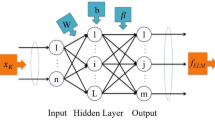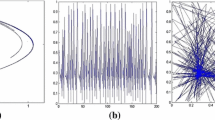Abstract
Recently, a simple and efficient learning steps referred to as extreme learning machine (ELM), was proposed by Huang et al. , which has shown that compared to some conventional methods, the training time of neural networks can be reduced even by thousands of times. However, recent study showed that some of random hidden nodes may paly a very minion role in the network output and thus eventually increase the network complexity. This paper proposes a parallel chaos search based incremental extreme learning machine (PC-ELM) with additional steps to obtain a more compact network architecture. At each learning step, optimal parameters of hidden node that are selected by parallel chaos optimization algorithm will be added to exist network in order to minimize the residual error between target function and network output. The optimization method is proposed parallel chaos optimization method. We prove the convergence of PC-ELM both in increased network architecture and fixed network architecture. Then we apply this approach to several regression and classification problems. Experiment of 19 benchmark testing data sets are used to test the performance of PC-ELM. Simulation results demonstrate that the proposed method provides better generalization performance and more compact network architecture.
Similar content being viewed by others
References
Feng G, Huang G, Lin Q, Gay R (2009) Error minimized extreme learning machine with growth of hidden nodes and incremental learning. IEEE Trans Neural Netw 20(8): 1352–1357
Hornik K (1991) Approximation capabilities of multilayer feedforward networks. IEEE Trans Neural Netw 4: 251–257
Huang G, Chen L, Siew C (2006) Universal approximation using incremental constructive feedforward networks with random hidden nodes. IEEE Trans Neural Netw 17(4): 879–892
Chen L, Zhou L, Pung H (2008) Universal approximation and QoS violation application of extreme learning machine. Neural Process Lett 28(2): 81–95
Huang G, Zhu Q, Siew C (2006) Extreme learning machine: theory and applications. Neurocomputing 70: 489–501
Huang G, Chen L (2008) Enhanced random search based incremental extreme learning machine. Neurocomputing 71: 3460–3468
Miche Y, Sorjamaa A, Bas P, Simula O, Jutten C, Lendasse A (2010) Optimal pruned extreme learning machine. IEEE Trans Neural Netw 21(1): 158–162
Huang G, Chen L (2007) Convex incremental extreme learning machine. Neurocomputing 70: 3056–3062
Liang N, Huang G, Paramasivan S, Narasimhan S (2006) A fast and accurate online sequential learning algorithm for feedforward networks. IEEE Trans Neural Netw 17(6): 1411–1423
Li B, Jiang W (1998) Optimizing complex functions by chaos search. Cybern Syst 29(4): 409–419
B Cheng, Z Guo, Z Bai, B Cao (2006) Parallel chaos immune evolutionary programming. AI 2006: Advances in Artificial Intelligence, Proceedings 4304:224–232
Li L, Yang Y, Peng H, Wang X (2006) An optimization method inspired by “chaotic” ant behavior. Int J Bifurcation Chaos 16(8): 2351–2364
Peng H, Li L, Yang Y, Liu F (2010) Parameter estimation of dynamical systems via a chaotic ant swarm. Phys Rev E 81(1): 016207
Author information
Authors and Affiliations
Corresponding author
Rights and permissions
About this article
Cite this article
Yang, Y., Wang, Y. & Yuan, X. Parallel Chaos Search Based Incremental Extreme Learning Machine. Neural Process Lett 37, 277–301 (2013). https://doi.org/10.1007/s11063-012-9246-9
Published:
Issue Date:
DOI: https://doi.org/10.1007/s11063-012-9246-9




